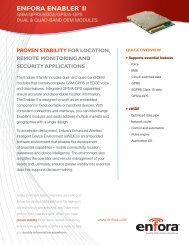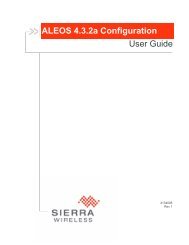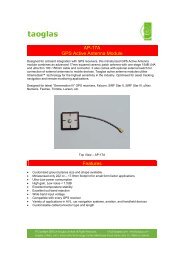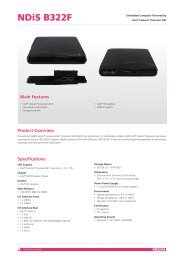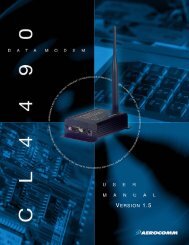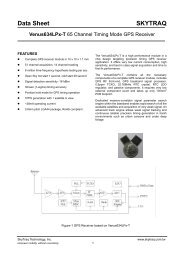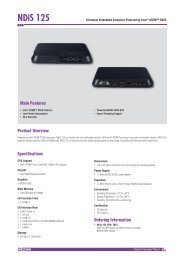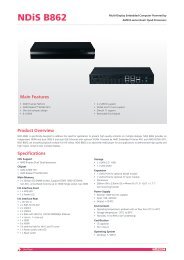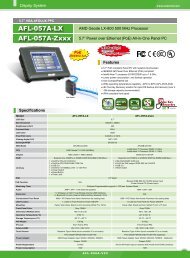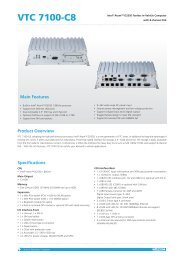Aerocomm AC4868.pdf - HEAnet Mirror Service
Aerocomm AC4868.pdf - HEAnet Mirror Service
Aerocomm AC4868.pdf - HEAnet Mirror Service
Create successful ePaper yourself
Turn your PDF publications into a flip-book with our unique Google optimized e-Paper software.
should be a strong consideration when designing the system.<br />
ENGINEER’S TIP<br />
SYSTEM THROUGHPUT<br />
www.aerocomm.com<br />
SERIAL INTERFACE<br />
In High-density applications, what amount of latency should be expected?<br />
It is not easy to predict the exact amount of latency in high-density applications. There are<br />
many variables that affect system latency. The three variables that most affect the latency are<br />
the network load, the distance between transceivers, and whether the transceivers are<br />
operating in a broadcast or addressed mode. There is no fixed answer as to how much latency<br />
will be introduced in the system when considering high-density applications. In these cases<br />
we can just offer qualitative analysis of the latency in high-density applications. As the network<br />
load increases, then the number of collisions that will occur increases. As the number of<br />
collisions increase, then the system latency increases. As the distance between the<br />
transceivers increases, so to does the system latency. Finally, when transceivers operate in<br />
addressed mode they will retry sending a packet up to the number of time specified in the<br />
transmit retry parameter specified in the EEPROM. As the number of retries increases, the<br />
system latency will increase also.<br />
When operating as shown below, an AC4868-250 transceiver is capable of achieving the listed throughput. However,<br />
in the presence of interference or at longer ranges, the transceiver may be unable to meet the specified throughput.<br />
RF Mode<br />
Table 7: Maximum System Throughput<br />
RF Baud<br />
(detemined by<br />
Interface Baud)<br />
Half Duplex Throughput<br />
(bps)<br />
Full Duplex Throughput<br />
(bps) each way<br />
Addressed 28,800 15k 7.5k<br />
Addressed 19,200 6.8k 3.4k<br />
Broadcast 28,800 18k 9k<br />
Broadcast 19,200 12k 6k<br />
11



